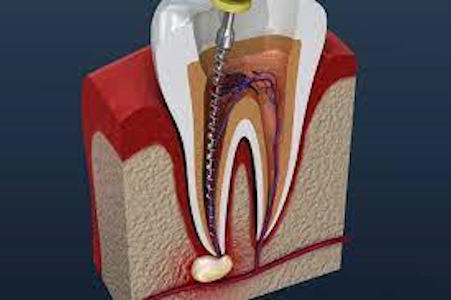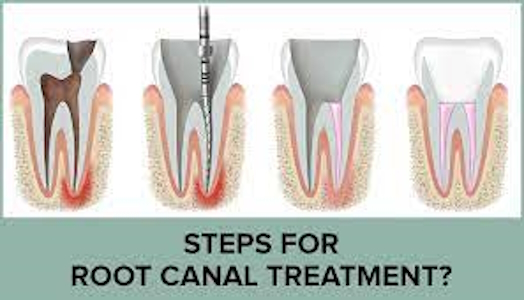
Understanding Root Canal Treatment: What You Need to Know
Root canal treatment (RCT) is a common dental procedure designed to save a severely decayed or infected tooth. Although many people fear the procedure, it’s actually an effective and safe way to relieve pain and restore your tooth to health. If you’ve been recommended for a root canal or are simply curious about what it involves, this article will explain everything you need to know.
What is a Root Canal?
The root canal is the soft tissue inside the tooth that contains blood vessels, nerves, and connective tissue. When a tooth becomes severely damaged by decay, a deep crack, or an infection, the pulp (the soft tissue inside) can become inflamed or infected. If left untreated, the infection can spread, causing pain and potentially leading to tooth loss.
Root canal treatment is the procedure used to remove this damaged or infected tissue, clean the inside of the tooth, and seal it to prevent further infection. In essence, it saves the tooth and restores it to full function.
Why Would You Need a Root Canal?
You may need a root canal if you experience the following symptoms:
-
Persistent tooth pain, especially when chewing or applying pressure.
-
Sensitivity to hot or cold temperatures that lingers even after the stimulus is removed.
-
Swelling and tenderness in the gums near the affected tooth.
-
Discoloration of the tooth, often appearing darker than the surrounding teeth.
-
Pimple-like bumps on the gums that may discharge pus.
These signs indicate that the pulp inside the tooth is compromised, and if you delay treatment, the condition could worsen, possibly resulting in the need for tooth extraction.

What Happens During Root Canal Treatment?
-
Initial Consultation: Your dentist will assess your tooth using X-rays to determine the extent of the damage and confirm that a root canal is necessary. They will also explain the procedure and address any concerns you may have.
-
Anesthesia: To ensure you are comfortable, a local anesthetic will be applied to numb the area around the tooth. Most patients report little to no discomfort during the procedure.
-
Accessing the Pulp: The dentist will make a small opening in the top of the tooth to access the infected or damaged pulp inside. Special instruments are then used to carefully remove the pulp.
-
Cleaning and Shaping: Once the pulp is removed, the space inside the tooth (the root canal) is cleaned and shaped to eliminate any remaining bacteria and debris.
-
Sealing the Tooth: After cleaning, the empty canal is filled with a rubber-like material called gutta-percha. This helps seal the tooth and prevents future infections.
-
Restoration: In many cases, the tooth will require a crown to provide additional strength and restore its appearance. The dentist will take an impression of your tooth for the crown, which will be placed in a follow-up visit.
Is Root Canal Treatment Painful?
Many patients worry about the pain associated with root canal treatment, but the procedure is generally not painful. Thanks to modern anesthesia and advances in dental techniques, the treatment is often no more uncomfortable than having a regular filling. After the procedure, it’s common to experience mild discomfort for a few days, which can be managed with over-the-counter pain relievers.
Benefits of Root Canal Treatment
-
Pain Relief: One of the biggest benefits of root canal treatment is the immediate relief from pain caused by an infected or inflamed tooth. Once the infection is removed and the tooth is sealed, the pain should subside.
-
Preserving Your Natural Tooth: Root canal treatment allows you to keep your natural tooth, rather than opting for an extraction. This helps maintain proper chewing function and prevents shifting of nearby teeth.
-
Prevents Further Infection: The treatment eliminates the infection, preventing it from spreading to other teeth or affecting your overall health.
-
Long-Term Durability: With proper care, a tooth that has undergone root canal treatment can last a lifetime. Many people retain their treated tooth with little to no issues.
Aftercare and Recovery
After your root canal procedure, it’s essential to follow your dentist’s aftercare instructions. These may include:
-
Avoiding chewing on the treated tooth until it is fully restored with a crown.
-
Taking prescribed medications (if necessary) to manage pain or reduce swelling.
-
Maintaining good oral hygiene, including brushing and flossing regularly, to keep the treated tooth and surrounding teeth healthy.
You should also schedule a follow-up appointment with your dentist to ensure everything is healing properly and to place the final restoration.
Conclusion
Root canal treatment is a highly effective way to save a damaged tooth, relieve pain, and restore your oral health. Although it may sound intimidating, the procedure is generally straightforward and well-tolerated. If you think you may need a root canal, it’s important to consult with your dentist as soon as possible to prevent further complications and ensure the best possible outcome. With the right care, your treated tooth can serve you for years to come, allowing you to smile confidently once again.
If you have any questions or concerns about root canal treatment, don’t hesitate to speak with your dentist. They will guide you through the process and help you make an informed decision about your oral health.
